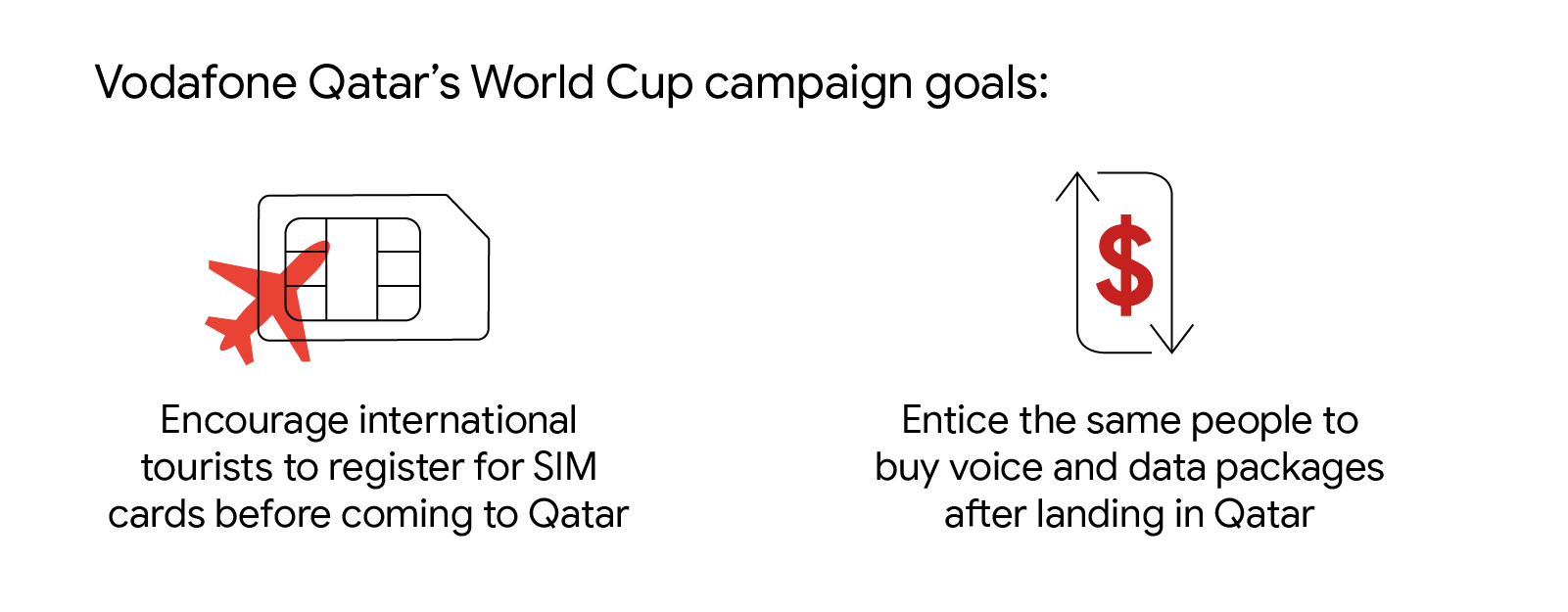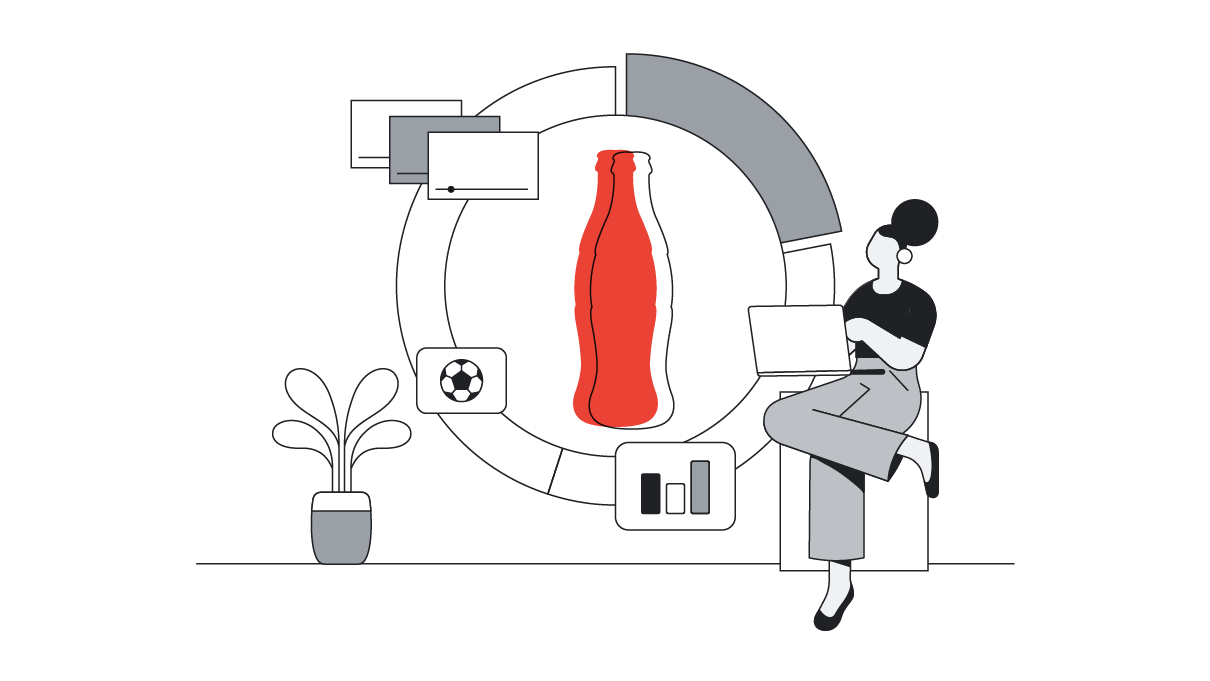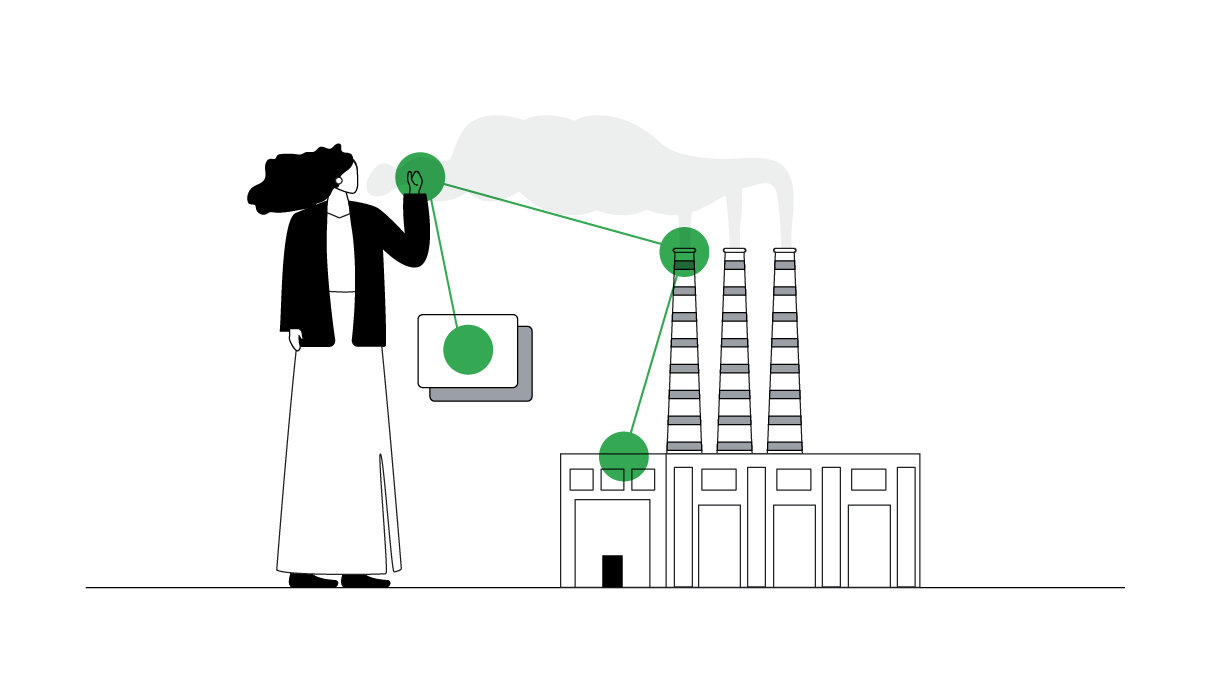Farid Abboud is a senior marketing manager at Vodafone Qatar, working on media strategy and brand engagement.
What’s the one thing you always take with you when you go on holiday? You probably said your phone. But international roaming can be expensive. Which is why most people pick up a local SIM card when they land at their final destination.
When millions of football fans converged on Qatar for the FIFA World Cup Qatar last year, Vodafone Qatar wanted to make sure their SIM cards were travellers’ first choice.
On the one hand, that meant encouraging international tourists to register for Vodafone SIM cards in their home countries before they arrived in Qatar. And on the other hand, it meant enticing those same customers to top up with ‘fan packs’ — phone packages including data, minutes, and more — after landing in Qatar.

Here are the four steps we took to get people to do both — and what we learned for future campaigns:
1. Nailing down our target markets from the get-go
Using internal research that showcased the number of international tourists expected in Qatar for the World Cup, and the countries they’d most likely be coming from, we identified seven key markets we wanted to reach. These were: the United Arab Emirates (UAE), Saudi Arabia, Argentina, France, U.S., Mexico, and Morocco.
We needed to reach only those people travelling to Qatar for the World Cup. Which is why precise audience targeting became critical to success.
We then partnered with media and advertising agency, Universal Media, to determine our ideal audiences in each of those markets.
“This was the first time Vodafone Qatar was advertising outside of Qatar at such a large scale, and this presented a unique challenge,” says Rohan Eden, senior director of performance at Universal Media.
“Each of the seven markets they were trying to reach boasted bigger populations than Qatar. But out of those large populations they needed to reach only those people travelling to Qatar for the World Cup. Which is why precise audience targeting became critical to success.”
Universal Media helped us hone in on three types of Google audiences, meaning groups of people with specific interests and intents, as estimated by Google:
- In-market audiences; those actively searching for more generalised interests, like “trips to Doha” or “live events”.
- Custom segments, for example people who had downloaded Qatar’s Hayya app, the official platform for processing entrance applications to the country.
- And affinity audiences, those whose broader interests and hobbies come through in their searches, such as “football fans”.
2. Pairing people and AI to drive ad effectiveness
With markets and audiences in place, we next had to design ads tailored to them. To create these assets at scale and minimise cost, we leveraged AI-powered ad platform, Smartly.io.
“Travellers were coming to Qatar to watch their favourite teams play football — and hopefully win,” Sonia Samuel, Smartly.io’s client partner for the Middle East and Africa, says. “It was important to channel their patriotism in impactful personalised creatives that captured attention both inside and outside of Qatar. But the real goal was getting people to act.”
Using Smartly.io’s AI-powered dynamic creative optimisation (DCO) technology — display ad technology that creates personalised ads based on data available about the person viewing the ad — was key to getting this balance right.
Pairing seven “base” images of country-specific football fans with other design elements and copy, the Smartly.io team designed a handful of personalised ads. Then, using Smartly.io templates, they aligned those foundational ad creatives with the audience segments we had chosen, delivering over 500 ad variations in different formats and languages in just two days.
For example, the ad below — designed to reach Saudi Arabian fans in Qatar and drive connection and relevance with them — features Arabic copy and shows a football fan wearing the Saudi flag colours.
3. Staying agile and adapting ads to match results
Our campaign ran from just before the World Cup started in November last year to the final match in December.
Match results had a direct impact on which fans were more likely to visit Qatar and possibly purchase our products.
Our media teams had to keep a close eye on the countries that made it through to the finals so we could show the right ads to the right people at the right time. Smartly.io’s platform helped manage this by switching ad variants on or off in sync with World Cup matches in real time.
For example, this Bumper ad — which went live in France to promote our free SIM cards — ran throughout the campaign because France made it all the way to the final:
4. Keeping ads fresh
With our World Cup ad creatives being tied to a timely event, it was important to maximise reach and cost per reach — the cost to reach one unique person with an ad — both inside and outside Qatar for the whole tournament. We used a mix of Google video solutions to do this, including TrueView In-stream and Bumper ads, and Display formats, including Discovery ads and Google Display Network.
But with so many ads going out, it was important to make them live at a frequency that kept content feeling fresh. We did this by consolidating our media through Display and Video 360 (DV360), and applying frequency capping across our inventory. This ensured we reached only those audiences actively searching to come to Qatar for the World Cup. It also regulated the number of times an ad was seen by the same person across devices, platforms, and formats.
This approach not only showed the right ads to the right people, it also directed our spend at new audiences rather than people that had already seen our ads many times before. This approach was instrumental in helping us achieve an additional 30% incremental reach.
Goals unlocked, lessons learnt for future campaigns
The World Cup campaign was a clear win for us from a marketing perspective. Not only did we reach 123 million people around the world, we also saw 19.3 million ad views; 3.3 million clicks across app, video and search; and 133K new app installs.
And it impacted our bottom line positively. People used Vodafone Qatar products to make 15 million voice calls during the tournament, with 419K fan packs sold to people attending the tournament.
A successful campaign needs to run like a well-oiled machine, taking every component and phase into account.
Planning your ideal audiences from the beginning is vital to creating ads that consumers actually want to see. But to bring those ads to life and get them out to as many interested people as possible — not only at a time that makes sense, but also keeping costs in mind — you need to pair the right people with AI-powered solutions. This is the approach we’ll continue to take as we work on our future campaigns.






